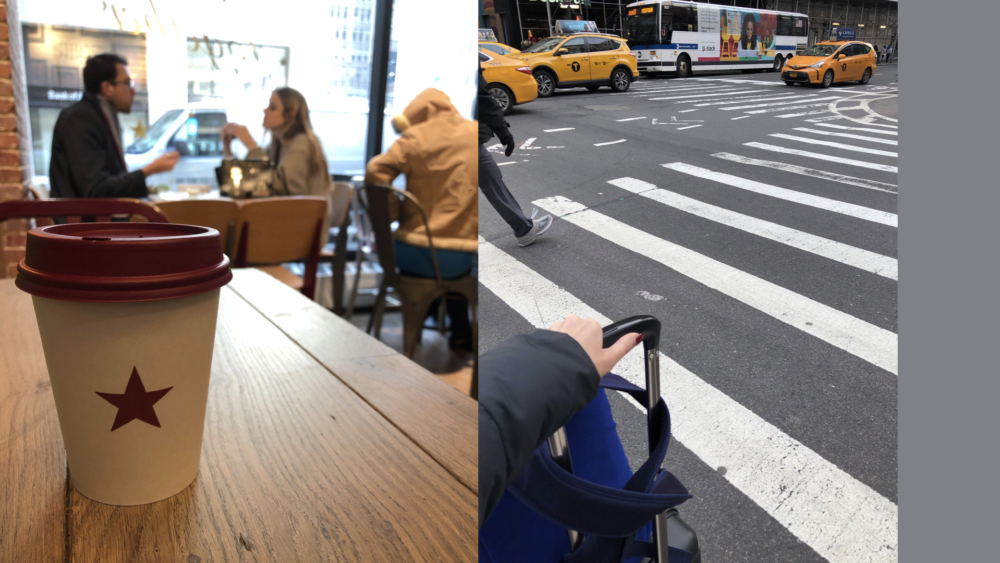I was escaping New York’s winter with a hot cup of latte. I picked up my phone to check my flight timing for the dozenth time; I was traveling alone and I couldn’t afford being too latte. Suddenly, the empty seat across my table was filled. Puzzled by this event, and a question if I should offer this homeless person sitting on my table a drink, my train of thought was interrupted by loud coughs of the homeless person. A lady in red across the coffeeshop waved at me with troubled eyes signaling the availability of an empty seat next to her. I was unsettled because of the coughs, so I picked up my baggage and changed seats.
The lady whispered to me explaining why she encouraged me to change my table “We don’t judge, but she might be sick; she was coughing”. From my new seat, I was able to observe the encounter of the coffeeshop staff forcing the homeless person to leave and facing resistance. The homeless person eventually left the coffeeshop to battle the ice-cold winter of the big city. I felt momentarily coldhearted. The lady in red turned back to me, “You know, it’s their fault for being in such situation. You need to work hard in this life”. I replied with an uneasy smile. I was wondering: is it really their fault though?
I checked the time once more. If I miss the sub, I’ll miss the air-train and miss my flight, and I can’t afford that. Scarcity in time, money, affection or anything else consumes cognitive resources like memory and attention and leads to cognitive deficits. My condition of minor scarcity was not comparable to a homeless person’s situation, but the psychology behind this is the same. The psychology of scarcity suggests that being in a situation of scarcity leads to cognitive and behavioral responses that are counterintuitive to how the brain works. We place higher value on whatever is scarce. For example, a person living in scarcity will prioritize short-term gains to satisfy that scarcity right away. Being in poverty affects cognition functions and leads to decisions that exacerbate conditions of poverty – a vicious cycle. This insinuates that being in poverty is not only a result of being poor but also a cause for being poor. To alleviate poverty, this cycle all together must end. To alleviate poverty, we need to…. Alleviate poverty?
Giving a poor person a fashionable new pair of shoes, although groovy, does not necessarily help solve their poverty problem. We do good with good intentions. It feels good. However, this good is doing more harm. To our defense, we are socialized into thinking that the poor need our help. Even so, not only do our short-term solutions fail to contribute to poverty alleviation, they also exacerbate its repercussions. Keeping the poor in the vicious cycle of seeking short-term answers limits them from escaping poverty. It also gives birth to generations of poor people who believe that receiving aid is the only way to get out of poverty. The solution lies in thinking long-term and empowering the poor to be self-sufficient. Moreover, the way we perceive poverty alleviation requires a paradigm shift. We need to move from doing the kind of good that just feels good to the kind that actually makes lasting results – the kind that eradicates poverty.
Social entrepreneurship has proven to be the key alleviator of poverty when it empowers populations to solve their own challenges. The innovation in social enterprises addresses poverty at its grassroots levels while applying novel approaches to create social value. This enabled social enterprises to succeed in areas where governments have failed. With this instrumental role, social enterprises need to be driven by their missions first and foremost. If well-intentioned actions can lead to negative implications, then evaluating potential impact is essential to achieve social change. Modeling for both the long and short-term using frameworks like Stanford Business’ Impact Compass, The Centre for Social Impact’s guide to social impact measurement and the World Bank’s Measuring Impact Framework help in assessing
References:
